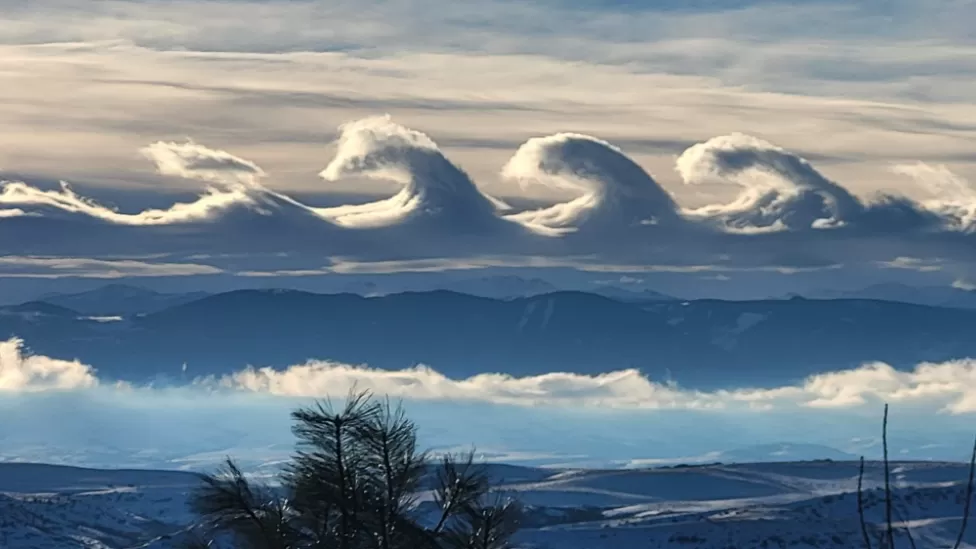There are different types of clouds .Kelvin-Helmholtz clouds, with their mesmerizing wave-like patterns, create an ethereal and awe-inspiring display in the sky. These captivating atmospheric formations resemble rolling ocean waves or horizontal curls, offering a glimpse into the dynamic and fluid nature of the Earth’s atmosphere. In this article, we will explore the intriguing world of Kelvin-Helmholtz clouds, including their formation, characteristics, and the mesmerizing visual spectacle they present.
What are Kelvin-Helmholtz Clouds?
Kelvin-Helmholtz clouds, named after the 19th-century scientists Lord Kelvin and Hermann von Helmholtz, are a type of cloud formation characterized by distinct wave-like billows or undulations. They often appear as parallel, elongated cloud layers with alternating troughs and crests, resembling the rolling waves seen on the surface of the ocean.
Formation of Kelvin-Helmholtz Clouds:
Kelvin-Helmholtz clouds form when there is a velocity difference between two adjacent layers of air. This difference in speed creates a shearing motion, leading to the development of Kelvin-Helmholtz instability. When the upper layer of air moves faster than the lower layer, it generates rolling motion in the cloud layers, resulting in the characteristic wave-like patterns.
Atmospheric Conditions:
Kelvin-Helmholtz clouds typically form in areas where there is a significant difference in wind speed between adjacent layers of air. This can occur in various meteorological situations, such as when strong winds blow over a stable layer of air or when there is a significant change in wind direction with height. These conditions provide the necessary shear forces for the development of Kelvin-Helmholtz instability.

Characteristics of Kelvin-Helmholtz Clouds:
Kelvin-Helmholtz clouds possess several distinctive characteristics that make them visually captivating:
- Wave-Like Undulations: The most prominent feature of Kelvin-Helmholtz clouds is their wave-like appearance. The clouds exhibit rolling or curling billows that extend horizontally across the sky, creating a visually striking display.
- Layered Structure: Kelvin-Helmholtz clouds often form as layered structures, with parallel cloud layers stacked on top of each other. The layers alternate between crests (upward bulges) and troughs (downward indentations), further enhancing the wave-like pattern.
- Dynamic Nature: Kelvin-Helmholtz clouds are dynamic formations, continuously evolving and changing shape. The undulations can vary in size, frequency, and amplitude, constantly morphing as the shear forces in the atmosphere fluctuate.
Occurrences and Observations:
Kelvin-Helmholtz clouds can be observed in various weather conditions, including frontal boundaries, jet streams, or when there is significant wind shear in the atmosphere. They are more commonly seen in regions with strong atmospheric instability, such as coastal areas, mountainous regions, or during severe weather events.
Conclusion:
Kelvin-Helmholtz clouds offer a breathtaking display of atmospheric fluid dynamics, presenting us with nature’s artistic interpretation of rolling waves in the sky. Their mesmerizing wave-like patterns serve as a reminder of the ever-changing and dynamic nature of our atmosphere. The next time you gaze up at the heavens, keep an eye out for the captivating beauty of Kelvin-Helmholtz clouds and be entranced by the intricate dance of air layers and shear forces unfolding before your eyes.


















